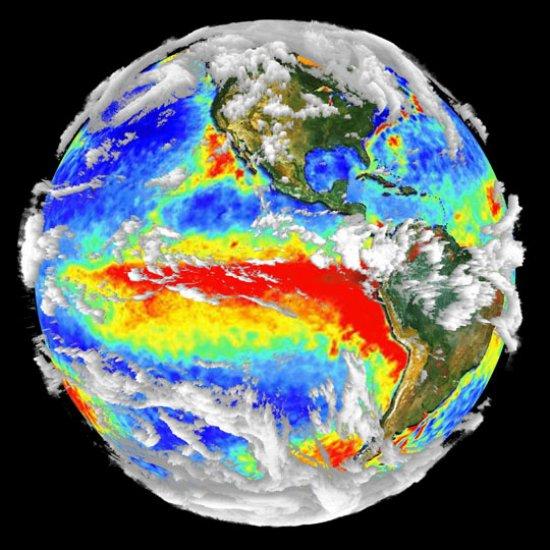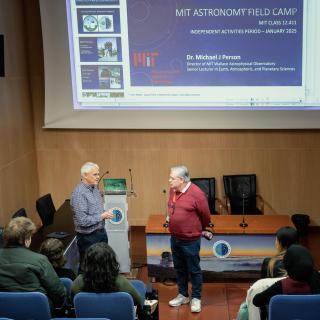Searchers for habitable planets in the Milky Way have found a new ally.According to research led by astronomers from the Instituto de Astrofisica de Canarias (IAC), clouds can provide enough information to determine the period of rotation of a planet and deduce the variability of its atmosphere. Owing to the role played by clouds, which are so commonplace on Earth but unique in the Solar System for their dynamism, it could suffice scientists to analyse the brightness of a planet to ascertain the length of its day and determine whether or not there is water on its surface.
From data obtained over two decades (1984-2005) by a network of meteorological satellites from all over the world, astronomers Enric Pallé, Pilar Monañés-Rodríguez and Manuel Vázquez from the IAC, together with Eric Ford from the University of Florida and Sara Seager of the Massachusetts Institute of Technology, have produced a computer-generated model of the Earth's brightness. Results have shown that, if observed as a point source, such as an extraterrestrial observer would view it, the Earth's cloud mass would follow a repetitive pattern with a certain frequency.
"The trick lies in interpreting the movement of the Earth's surface and the clouds as periodical signals, just as if we were to observe the spots on a spinning ball appearing and disappearing", explains Enric Pallé, first author of an article to be published next month in the American Astrophysical Journal.
From the patterns registered over several weeks of tracking, it is ossible to deduce the planet's rotational period since "on a global scale clouds aren't as random and chaotic as is generally believed, but instead follow a pattern marked by continental orography and oceanic currents".
Eric Ford, coauthor of the paper and astrophysicist at the University of Florida, ventures the thought that, should some extraterrestrial astrophysicists be looking for life beyond their own planet, "they'd only be able to see Earth as a faint dot because of the distance that separates us, but that could be enough for them to identify it as a planet that has clouds and oceans of liquid water". The existence of a liquid medium such as water is considered a necessary condition for life.
And it's only Earth among all the planets in the Solar System that shows persistent atmospheric variations: Venus is always covered in cloud, whereas on Mars clear skies predominate. According to Pallé, "on Earth the water is cyclicly transformed from ice to liquid to vapour owing to temperature and pressure conditions on its surface".
The presence of clouds produces a slight variability in the Earth's apparent rotation. This variability is an indication of climatic patterns, ofthe probable presence of water and therefore of conditions suitable for life. In this way, those planets with a "flat encephalogram", that is, with no visible cloud dynamics, have a lower probability of being habitable.
The researchers hold that the identification of the rotational period of an extrasolar planet will help us understand the mechanism that govern the formation of planetary systems. It will also aid in the design of a new generation of space telescopes to study earthlike planets with higher precision.
"It's possible that in a few decades we'll have a telescope capable of visualising some of the details of the atmosphere and surface of an earthlike planet. We will then be in a position to compare the simulations of this study with direct observations. For the moment, we are still hungry for photons", says Pallé. The hunt for photons will be boosted in 2008 by the Gran Telescopio CANARIAS (GTC), which, with its 10.4 metre mirror, is the largest in the world, and which is now being commissioned with the collaborative partnership of the University of Florida and Mexico.



